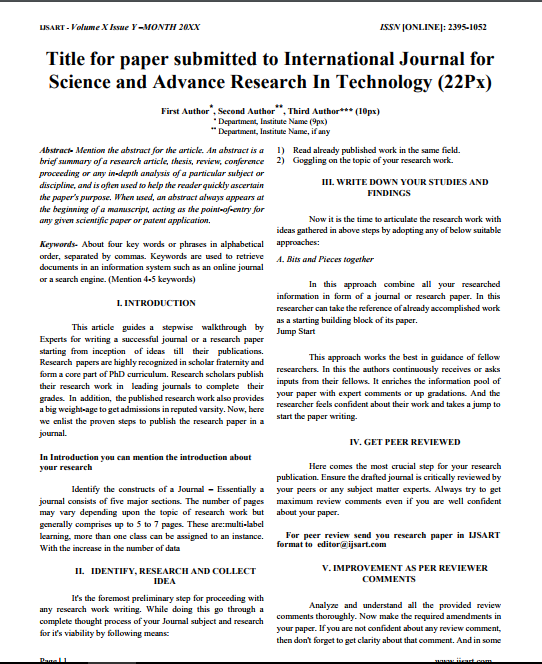Impact Factor
7.883
Call For Paper
Volume: 11 Issue 06 June 2025
LICENSE
Faster Ambulance Deployment With Analytics
-
Author(s):
Dr. A. Karunamuthy | K. Karthikeyan
-
Keywords:
Traffic Accidents, VaDE Clustering, Ambulance Deployment, Real-time Alerts, Linear Regression, Reduce Response Time
-
Abstract:
Every Day, The Number Of Traffic Accidents Rises As The Automobile Population Increases. According To A Survey By The World Health Organization (WHO), 1.3 Million People Die And 50 Million Are Wounded Annually Around The Globe. Most People Die Because They Don’t Get Medical Help At The Scene Of An Accident Or Because It Takes Too Long For Rescuers To Get There. The Time After An Accident Can Be Optimally Used To Make A Difference Between A Life Saved And Life Lost, If Recovery Actions Are Able To Take Place In Time. However, Routing Problems And Traffic Congestion Are Major Factors Hampering Speedy Assistance. By Identifying Sites Where The Possibility Of Accidents Is Higher And The Closest Spot For Ambulance Placement, The Response Time Can Be Greatly Reduced. This Project Aims To Revolutionize Emergency Response Strategies By Shortening The Time It Takes For An Ambulance To Arrive At The Scene Of A Road Accident. It Proposes A Novel Unsupervised Generative Clustering Approach Using Variational Deep Embedding (VaDE), Along With Linear Regression To Predict The Optimal Position For Ambulances Based On Accident Location Addresses. Linear Regression Helps In Forecasting The Closest Possible Ambulance Location By Analyzing Historical Accident Data, Such As Location, Frequency, And Distance. Additionally, This System Includes Real-time Alerts To Both Hospitals And Traffic Departments, Facilitating Route Clearance For Expedited Ambulance Travel. Unlike Traditional Clustering Methods, Variational Deep Embedding (VaDE) Is A 4-step Data Generation Process That Uses Deep Neural Networks And A Gaussian Mixture Model To Optimize Ambulance Positioning Strategies. By Placing Ambulances Near Accident-prone Areas, The Response Time Can Be Significantly Reduced, Saving Valuable Lives. This Combination Of Predictive Models Not Only Enhances Ambulance Placement Strategies But Also Aims To Improve The Overall Emergency Response System.
Other Details
-
Paper id:
IJSARTV11I6103745
-
Published in:
Volume: 11 Issue: 6 June 2025
-
Publication Date:
2025-06-07
Download Article


